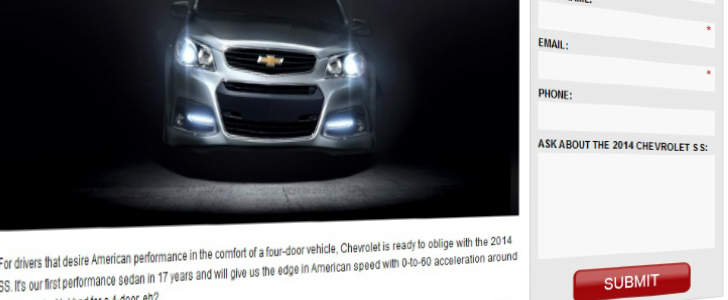 If there’s one word I hate using in marketing, it’s “engagement”. The term has been so overused and abused since the rise of social media that its meaning has become distorted. It’s defined in different ways and means different things to different people. Thankfully, the moves by search giants like Google and Bing as well as social giants like Facebook and Twitter have brought in at least a little uniformity to we should look for when trying to harness engagement.
If there’s one word I hate using in marketing, it’s “engagement”. The term has been so overused and abused since the rise of social media that its meaning has become distorted. It’s defined in different ways and means different things to different people. Thankfully, the moves by search giants like Google and Bing as well as social giants like Facebook and Twitter have brought in at least a little uniformity to we should look for when trying to harness engagement.
First and foremost, websites today must be engaging. That’s not to say that they have to be interactive; heavy websites that make people jump through hoops to find what they want simply don’t work today and may have really never worked. Today, people want to go to websites and find what they’re looking for quickly and easily. To make today’s websites more engaging, one simply has to add content. I’m not talking about the SEO content that is too heavy on many websites or the “share this on Facewitter” buttons that are put on so many pages that nobody would every willingly share. I’m talking about unique content that is interesting, useful, entertaining, or all of the above.
For businesses, it’s often hard to find and produce content that people will find interesting, useful, or entertaining. It’s not that the content doesn’t exist on the internet today or in the minds of a marketing professional. It’s that they don’t always know what kind of content they can find and produce. Here are seven such types of content that can work for your business to make your websites more engaging. There are plenty of articles (some that I have written) that discuss the reasons that you would want your websites to be engaging from a search and social marketing perspective so I won’t go into those reasons here. If you need to be convinced that it will be helpful, start with those articles first, then come back and learn more.
The good ol' image gallery
If there’s one thing that internet is not short on, it’s images. If there’s one thing the real world isn’t short on, it’s cameras thanks to the rise of smartphones. Between the two, finding or taking images that pertain to your industry, your local area, or both is a piece of cake.
With Chevy’s recent release of the 2014 Corvette, the internet is loaded with plenty of pictures. A Chevy dealer could compile some of the best images and load them up on their site. Take note – any time you use an image from somewhere else, you should always link to the original source. Attribution is ever-important when posting content to your website. There will be those who still contact you even when you properly attribute and ask you to remove the images. If it’s taken by someone else, it is has a copyright. Always respect them. There are plenty of sources that love to get links to their content and are willing to let you share.
The written content on a post such as “10 Awesome Angles of the 2014 Chevy Corvette” doesn’t have to be huge. At the minimum, a paragraph or two of unique content at the top is fine. What’s better is a little description of each image below the content as well as the one or two paragraphs at the top.
YouTube video(s) and commentary
The last thing you want to do is post a video by itself on your website. This brings no value and the visitor might as well link to the video itself. What you definitely can do with videos is find one or more of them (again, they must pertain to your industry, your local area, or both) and post them with appropriate commentary. Let’s say you find a great video about the 2014 Corvette. You could write up a couple of paragraphs detailing what led up to this epic new design, show the video, then discuss how this Corvette is dramatically different from your perspective. Unique commentary is extremely important here. You do not want to be posting the words of others. This should be personal. Make sure that the visitors who find this video and commentary get value out of both aspects.
To really add value and make the page engaging, use more than one video. People can share a single video more easily from YouTube itself than from your website, but by making it multiple videos on the same topic, you’ve now compiled something that people will be more willing to share as a link on their own website or through social media.
Link lists
These are great, but be very careful with them. The ideas is that you’ll write a short article – one or two paragraphs – about a particular topic, then offer several links to other websites that are also talking about the subject. If you write up a piece about the Corvette, you could then link to reviews or commentaries from trusted sources such as Car and Driver or Motortrend. The title of these pages could be something such as “How the Internet Responded to the 2014 Corvette Launch”.
The part about being careful – make sure that the links open in a new tab or window. What you don’t want is content that drives people completely away from your site. Linking out is not a bad thing despite what many experts tell you, particularly when you’re working with engagement content. Remember, they aren’t there on that page to buy your products or services right this very moment. They likely landed on the page by clicking on a link in search or social and their interest is learning more about the new Vette. Your benefits (I know I said I wasn’t going to talk about it but I’ll just mention it briefly) are not in the visitors that come to the site but the benefit these pages give you through search and social to drive future traffic to more important pages on your website.
Infographics
The beauty of infographics is that they’re visual. As an internet society, we love to see things more than we love to read about them. Even if the graphics themselves are loaded with words and statistics, they are often done so in a visually stunning manner that is more worthy of being shared. Take a look at this infographic we created for Mashable. There’s tons of data, but it’s easier to share because of the graphic nature of the content.
Just like with a video, do not simply post an infographic and walk away. You should post at least a little commentary about the graphic itself, what it means to your, your industry, your customers, your local area, or all of the above.
Full articles
This scares many people. For the most part, businesses owners and the marketing people that work for them aren’t journalists by trade. Thankfully, what most business owners do have is an expertise in their industry. Even if you’re not a great writer, you can probably come up with information that can be interesting to the layman and have someone else put it into a proper article format.
With the rise of AuthorRank, this may prove to be the most important overall form of content that we put on our business websites.
You don’t have to post too often, but if you can’t stay at least a little consistent by posting 2 or 3 full articles a month, there’s really no need to post them at all. If time is too scarce, stick to the…
Response articles
It may be hard to come up with original content, but it’s never hard to express opinions. There was a long article yesterday about Les Mis on FoxNews. I really liked what it had to say, so I wrote a response article to it. This response took no time at all – less than 20 minutes – but got the point across in a way that the internet likes without having to do a ton of research other than reading the original article.
As an expert in your industry and/or local area, you’ll find that writing response articles is one of the easiest ways to get a good amount of unique content on your website without having to do a ton of research. In essence, the research is already done by the real journalist. All you have to do is offer your opinions about what they got right, what they got wrong, or expand on what their basic premise was. With practice, these get to the point that you’ll be able to easily post them at your convenience.
* * *
Making websites pop on search and social isn’t as hard as most make it out to be. It starts with great content and continues into proper practices to make the search engines and social media sites love your stuff.
“POP” image courtesy of Shutterstock.




















